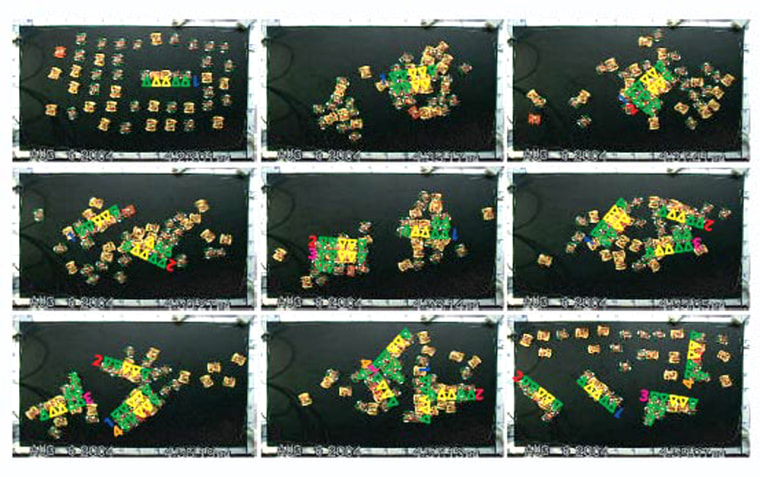Inspired by biological systems, scientists have developed miniature robots that can self-assemble using parts that float randomly in their environments. The robots also know when something is amiss and can correct their own mistakes.
Scientists have long been fascinated by how living cells are able to replicate DNA using building blocks floating randomly inside the cell’s nucleus. The interior of the nucleus is filled with a gel-like liquid known as nucleoplasm. The DNA building blocks, known as nucleotides, float around in this liquid like ingredients in a molecular soup. Also present in the nucleoplasm are proteins known as polymerases, which pluck nucleotides from the soup as needed when copying DNA.
The beauty of this approach is that the parts do not have to be presented in a specific order the way they are in a car assembly line. All the cell has to do is make sure there is a continuous supply of nucleotides and the polymerases do the rest. Furthermore, the more nucleotides present, the more likely they will come into contact with the polymerases and the faster the DNA strand can be assembled.
To artificially recreate this process, a research team from the Massachusetts Institute of Technology (MIT), headed by Joseph Jacobson, created robots capable of latching onto one another in specific sequences.
The robots come in two colors, yellow (Y) and green (G), and float around on a cushion of air like pucks on an air hockey table. Each robot is programmed to latch onto a green robot on one side and a yellow robot on the other to form 5-robot strings such as YGGYY or GYYGG.
The robots also have a built-in mechanism to correct any errors they might make. Each robot is able to check the color of its neighboring block and will unlatch itself if the sequence is not correct.
The study is detailed in the Sept. 29 issue of the journal Nature.
